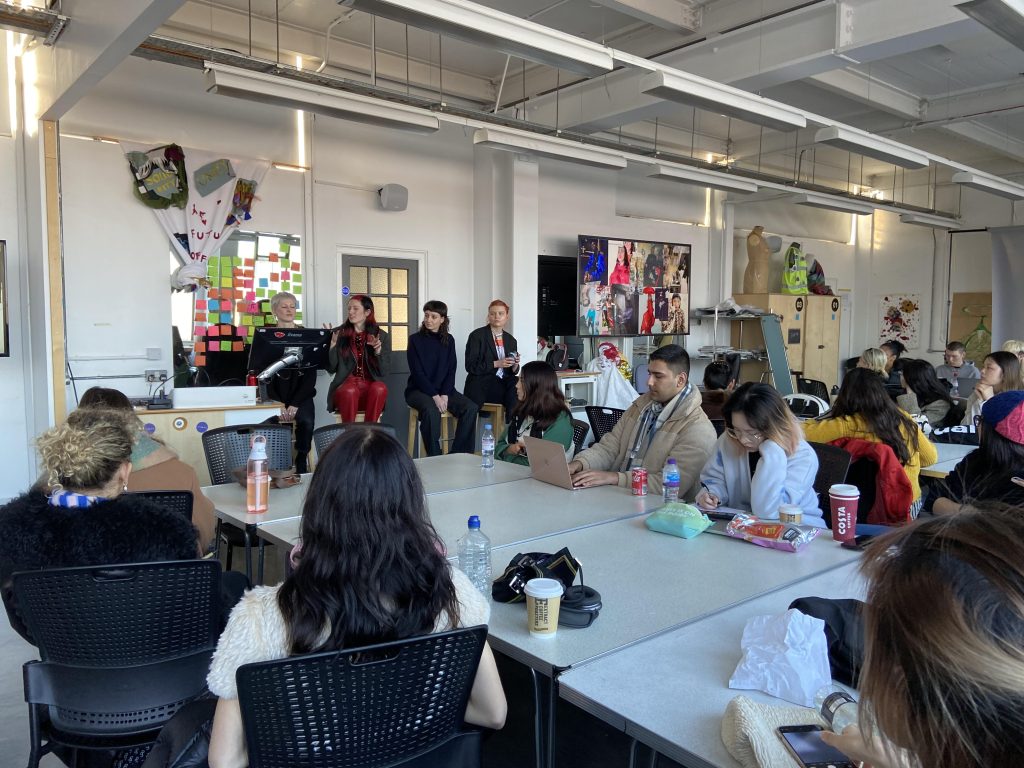As a full time Lecturer working on the Fashion Styling and Production course I spend a lot of my time teaching in Room A307/308 at Lime Grove Campus. It is one of the largest classroom spaces available, so we are lucky to not only have access to it, but consider it our ‘FSP home’. The room holds our teaching tools, rails of clothes collected from charity shops, mannequin’s and multiple TV screens. The room has as a certain charm, reminding me of an old factory turned New York loft with large windows and industrial appliances. Despite all these lovely aesthetic qualities, I find that I often struggle to teach and create a sense of intimacy within that space.
With the room being stretched out wide in terms of length, I often find myself neglecting one side of the room, catering my gaze to the side where the students ask more questions and make eye contact. This is a subconscious act that disconnects me from my quieter and shyer students. I also sense a shift in energy, when I go sit at the front podium to present my lecturer or lead a discussion. The students become distant and a formality presents itself.
Within my teaching role, I see myself not as holder of knowledge, but rather a facilitator to encourage learning, growth and development. However, the room, its furniture, layout and its learned dynamics, present me otherwise.
- How can students feel safe to create and to innovate with this feeling of formality?
- How can we allow them to feel open to be vulnerable, ask questions and even make mistakes?
- Does the formality of a traditional classroom space really work within creative courses?
- Does the traditional layout and furnishings of a classroom where the students all face the teacher as they stands at the front of the class on a high podium hierarchical?
The beauty of reflection is that it allows us to question ideas and structures that exist around us and see if they still hold value and purpose within our current day. I often wonder if this structure separates students and students, and also students and tutors, and if this should be adjusted if we want to see co-creation and true collaboration? It’s important that students have shared ownership of these spaces so students feel a sense of belonging and liberated to be free in terms of creativity and collaboration.
